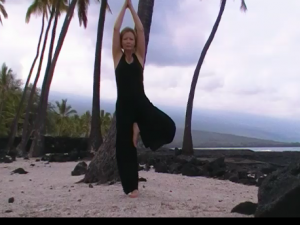I am a person who always has had an insatiable drive to learn. At times this compulsion has had an urgent feel to it (“if only I knew more, then I would be able to . . . ” ), and at others it has been a simple and gentle, unmotivated curiosity.
And then, I always have had a strong aversion to seeing people in distress. You might say that I suffer when others suffer; I am told that this is called empathy. This pain-of-noticing-pain has propelled me toward a passionate desire to help others.
Neither of these qualities is positive or negative in and of itself. Each of them has had both effects in my experience. Years of striving to learn and trying to alleviate suffering have shown me the whole gamut of how humans hurt (and how we unwittingly propagate more). While I try to be open to new revelations, what I have come to understand at this point is:
- I will never have perfect knowledge,
- there is nothing I need to know to become more whole, and
- neither identifying with, nor ignoring, suffering is going to ameliorate it.
So do we just give up? Become impassive or unmoved, not caring about learning more or about helping others?
No. The answer, I believe, is that, ultimately, there is a middle ground in which one is curious because it comes with being present, and one is compassionate because one understands that everyone is in pain and that untransformed pain eventually breeds more misery in the world. It is a stance that requires a dropping of barriers and protective layers, simple attentive action performed with love.
Balancing the core principles of practice and non-attachment in the Yoga Sutras of Patanjali underlie this middle ground that I would argue is essential to being truly happy.
- Practice “involves cultivating a strong conviction, a persistent effort to consistently choose practices with actions, speech, and thoughts that lead in the direction of a stable tranquility” and
- non-attachment “involves learning to actively and systematically encounter, explore and let go of the many attachments, aversion, fears, and false identities that are clouding the true Self.”
- “Practice leads you in the right direction, while non-attachment allows you to continue the inner journey without getting sidetracked into the pains and pleasures along the way.” (http://www.swamij.com/yoga-sutras-11216.htm, accessed 2014/11/11)
Jesus also states this in many ways in the New Testament. Here’s one verse that speaks to the issue of how we are to act and yet let go of results:
And as he was setting out on his journey, a man ran up and knelt before him and asked him, “Good Teacher, what must I do to inherit eternal life?” And Jesus said to him, “Why do you call me good? No one is good except God alone. You know the commandments: ‘Do not murder, Do not commit adultery, Do not steal, Do not bear false witness, Do not defraud, Honor your father and mother.’” And he said to him, “Teacher, all these I have kept from my youth.” And Jesus, looking at him, loved him, and said to him, “You lack one thing: go, sell all that you have and give to the poor, and you will have treasure in heaven; and come, follow me.” (http://www.openbible.info/topics/attachment, Mark 10:17-31; accessed 2014/11/11)
This is not so much about moralistic behaviour; Ie., poverty or generosity will get you to Heaven, as it is about letting go of everything; that is, not identifying with things, accomplishments, experiences, emotions, thoughts, or beliefs and instead trusting in the underlying goodness, connectedness and wisdom.
Further, Ignatian (Jesuit) discernment asks us to be interiorly free when we decide to act.
“Pray for openness to God’s will, and for freedom from prejudgment and addictions.
Ask for that inner freedom and balance that allows you not to be inclined more toward one alternative or option than to the other. This means to ask to be free enough to be influenced only by this one value: which alternative will give most glory to God and be expressive of my own deepest self, my authentic self? (http://www.ignatianspirituality.com/making-good-decisions/an-approach-to-good-choices/an-ignatian-framework-for-making-a-decision, accessed 2014/11/14)
So this well-discerned action performed with detachment is key to peaceful living. But something has only been mentioned, and that piece is hinted at in the beginning sutras and in the scripture from Mark. It is LOVE. Nischala Joy Devi, in her translation of the Yoga Sutras defines yoga as “the uniting of consciousness in the heart. “ (The Secret Power of Yoga) And Mark’s account has Jesus referring to the commandments, the two foundational principles of which are entirely dependent upon love.
I must confess that I have absolutely no familiarity with Sankara’s Vivekachudamani which is known to be an authoritative text on discernment. Another is the Yoga Vasistha . Only recently am I sufficiently moved to find out more . . .
But for now, suffice it to say that we can affirm, make this sankalpa, “I lovingly and consistently choose to act in ways that lead me to a stable tranquility while being inquisitively non-attached to the results.” With grace, this type of intention could very well be the key to a seemingly simple, but actually very profound heartfelt wish I heard my teacher express recently, “May my actions be appropriate.”
